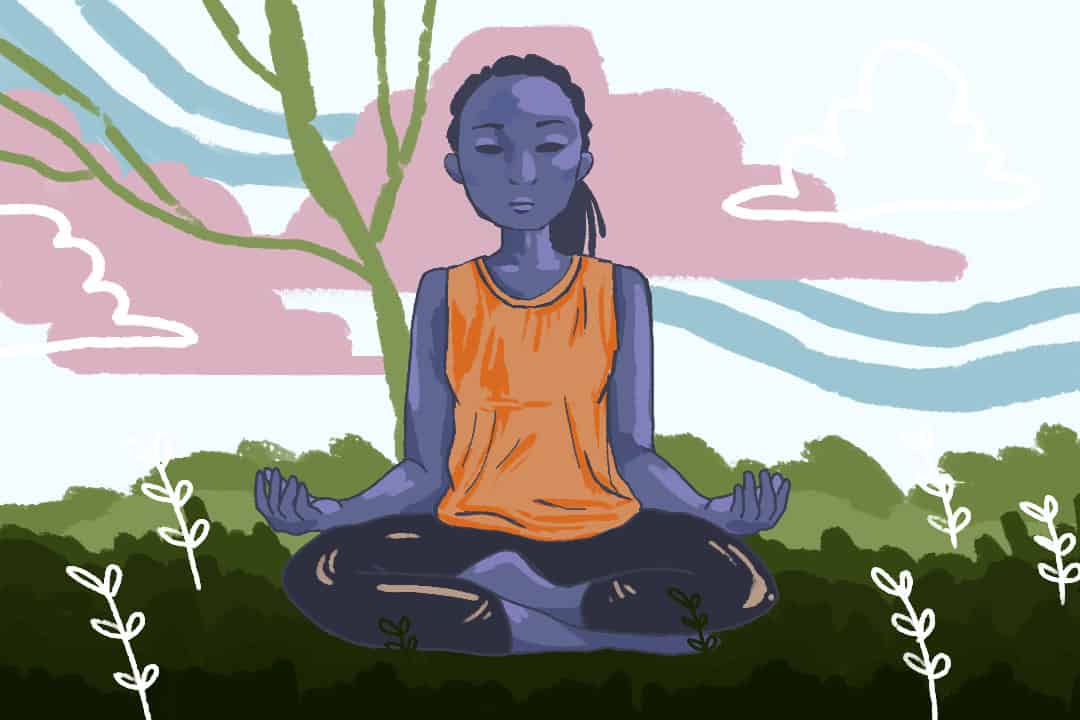For one, meditation is known to reduce stress, which is something none of us are short of these days with COVID-19 still at the forefront of all of our minds.
Research has shown that practicing meditation in the long-term reduces depression and anxiety scores, cortisol — which is a stress hormone — levels, and also improves blood circulation. Evidence has also shown that even patients with high blood pressure, after an eight-week course in mindful meditation, can benefit from lowered blood pressure values.
I jumped aboard the meditation train in my second year at U of T. In the beginning, as I’m sure many people have experienced, there was an overwhelming barrage of information.
With countless apps, YouTube videos, and online instruction promising to be the ideal beginner’s guide, the biggest hurdle we face is knowing where to start. Given that this surplus of information often does more harm than good to new meditators, here’s a brief guide on how to meditate your way to a healthier body and mind.
First, we must acknowledge and appreciate the history of meditation. Many are most familiar with secular practices of meditation today, and meditation originates in religion from as early as 1,500 BC in India and 600 BC in China.
With ties to Buddhism, Hinduism, and other religions, the practice spread with trade along the Silk Road. Buddhism was one of the most prominent contributors to the spread of meditation, as the teachings of the Buddha sought to teach patience, among other virtues. Meditation even has ties to Judaism and Sufism.
You don’t need special equipment to start meditating — just find a quiet place to sit or lie down in comfortable clothing. If you cannot find a peaceful corner in your home, try lighting a candle and putting on headphones with nature sounds, or calming music.
Next, close your eyes and let yourself breathe naturally. Focus your attention on this breathing and try to make yourself aware of the way your shoulders rise and fall, and how your rib cage expands. By no means should you force yourself into a strict cadence of breathing.
If your thoughts wander gently, bring your attention back to the present. Focus on the soft hum of the air-conditioning, the happy chirps of the birds outside. Remember to be kind to yourself as you empty your mind. The point of this exercise is for you to relax and be mindful of the present. Note any tension in your body and try to relax.
If you are worried about not knowing what to do, feel free to use guided meditation to help you stay on track. The free MyLife Meditation app on the Apple Store — previously called Stop, Breathe & Think — is a good choice, providing a tailored meditation guide based on the emotions you present to its check-in quiz.
Another resource is U of T’s fitness and performance Instagram page, @uoftfandp, which has a couple of guided meditation videos by Robin Waley of the Faculty of Kinesiology & Physical Education on its IGTV.
Don’t stress out about running your first meditation session perfectly. In fact, don’t even worry about doing it for more than five or 10 minutes. It’s not uncommon to fall asleep when you first start off with meditation. You can build your way to 15 or 30 minute sessions if you want.
Start by mentally checking in, then listening to a guide. Remember, this is to help you feel better.


